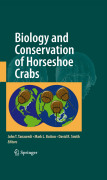
The four living species of horseshoe crabs face a set of growing threats to their survival, including the erosion and/or man-made alteration of essential spawning habitat, coastal pollution, and overfishing. Horseshoe crabs are “living fossils”, with a more than 200 million year evolutionary history. Their blood provides a reagent, known as Limulus amebocyte lysate or LAL, that clots inthe presence of minute quantities of bacterial endotoxin; the LAL test is thestate-of-the-art methodology used to ensure that pharmaceuticals and surgicalimplants are free of contamination. Horseshoe crabs are an integral part of the food web in coastal marine ecosystems, and their eggs provide essential food for shorebirds in the Delaware Bay estuary each spring. The commercial fishery for horseshoe crabs, which utilizes animals for bait, contributes to the economies of coastal communities. This book consists of papers presented at the 2007 International Symposium on the Science and Conservation of Horseshoe Crabs. Presents the latest research on horseshoe crabs Identifies conservation challenges Formulates plans for an international conservation program INDICE: Current Status and Assessment.- Biology, Ecology, and Multi-species Interactions.- Culture and Captive Breeding.- Habitat Requirements, Threats,and Conservation.- Human Uses: Traditional and Biomedical.- Conservation Management.- Public Awareness and Community-based Conservation.
- ISBN: 978-0-387-89958-9
- Editorial: Springer
- Encuadernacion: Cartoné
- Páginas: 510
- Fecha Publicación: 01/05/2009
- Nº Volúmenes: 1
- Idioma: Inglés
